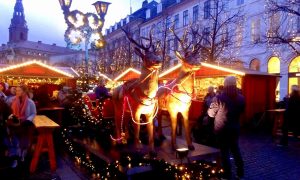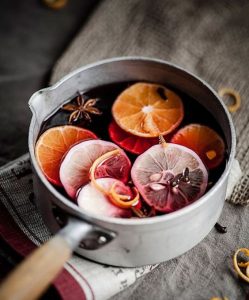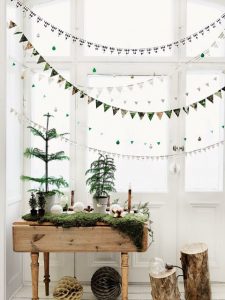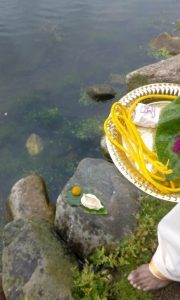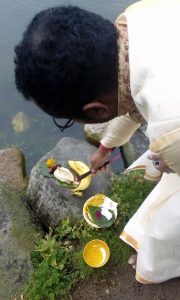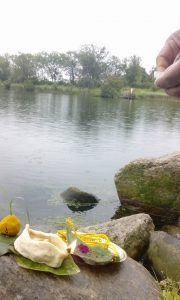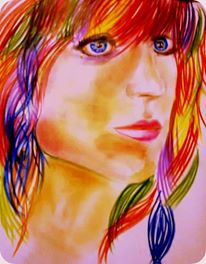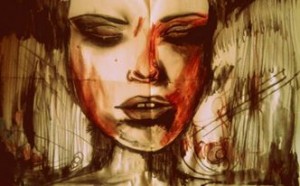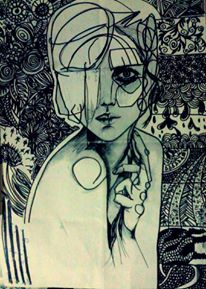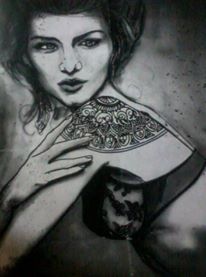Do you remember the smell of a Christmas tree in your childhood home? Well I do. Christmas mornings were amazing. When I was a kid I would wake up very early in the morning and would open all the gifts that my parents bought for me (well I never believed in Santa). Once all the gifts were opened at my place, I had other places to be! My uncles and aunts and grandmother, we all lived in the same yard and like every year, I had presents waiting for me under so many other Christmas trees.
Now that I have moved to Denmark, I have discovered a completely different way of celebrating Christmas or Jul as it is call in Denmark. Jul (pronounced “Yul”), the Danish Christmas, is celebrated throughout December, starting on December 1 with a variety of traditions.
Whether or not you will be celebrating this year, it’s always fascinating to learn about the traditions surrounding major holidays. Discover the Traditions feasts and decorations of the Danish Christmas celebration.
1.Danish Christmas Market
From November onward, Denmark explodes with magical Christmas markets. There are those at the heart of Copenhagen, the famous Tivoli Christmas market and traditional Christmas markets at castles and manor houses around Denmark. Below is the famous Christmas market at Tivoli Gardens.
2.Christmas Shopping
Christmas shopping in Mauritius is normally done on the eve of Christmas for most people. All shopping malls around the island will be packed with people until very late. However, Christmas here is a bit different. Christmas is sacred, offices and stores are closed on the 24th, 25 and 26th. Sleven (my husband) advised me to buy everything I need before the Christmas weekend. There will be no food place, supermarket of any shops open in Copenhagen from the 24th to 26th of December. People take time off during the holidays, some to go back to their villages or to travel but no one works during the holidays.. Just three days days of solid family, friend or relaxation time.
3.Food
The Danes love good food and drink all year round, but especially during the festive season. Aside from the much-anticipated Christmas Eve dinner, Danes spend the run up to and after Christmas enjoying festive lunches and dinners with friends, colleagues and family. Many of Denmark’s Christmas traditions are centred around a table full of delicious food and chairs full of great company.
Danish Christmas dinner
The traditional Danish Christmas meal is roast pork, boiled potatoes, red cabbage and gravy, although in recent times roast duck and goose have become popular
However, Christmas being during fasting periods, we will be making some traditional South Indian veg food for our very first Christmas together this year :).
4.Desserts
Risalamande
Risalamande comes from the french word ris à l’amande. It is a traditional Danish Dessert typically served for Christmas lunches or dinners . It consists of a rice pudding with vanilla, almonds and whipped cream, and it’s typically served together with warm cherry sauce. There are a myriad of ways to make risalamande and each family has its traditions.
As mentioned to me by a friend , Risalamande is made the day before and set out during the day to prevent Nisser (elves) from playing pranks.
The game with Ris a l’Amande is that the host mixes in one (or more) whole almond. If you find the almond, you get a prize/gift.
Æbleskiver
There are plenty more sweet things to enjoy, for those of you who like that sort of thing. A personal favorite is æbleskiver. Æbleskiver, th Danish Pancake ball is probably one of the most famous Christmas desserts that the Danes love to eat during Christmas.
Glögg (Mulled wine)
It’s cold. (Unless you’re in Mauritius , then it’s warm. In that case, drink an Alouda and enjoy the weather for me.) It’s been raining and snowing as well (though very little) for the last few days, making it both cold and damp. In harrowing times like this, there’s only one thing to drink: Glögg
Glögg, a hot spiced wine with almonds and raisins, is served at most markets and at many a party. Kids will have hot chocolate (adults can too!).
5.A month of presents -Danish Present calendars
All Danish kids get one or more Christmas calendars as they are called in Denmark.Danish Christmas calendars contain 24 small gifts for children, or grown-ups that like to treat each other! Also the two big television channels each year produce a special new Christmas series divided into 24 episodes and the kids watch eagerly every day and the excitement builds for the big night itself; 24 December!
6.Take part in a special celebration on Lucia night
Lucia is the Catholic saint of light. In many parts of Denmark, she is celebrated on the night of 13 December. Young girls in white sing in procession with candle headdresses and the ceremony is very peaceful and atmospheric. This year the Kayak Republic of Copenhagen organised a Kayak procession around the canals in the city. 200 kayaks on the water, lit up by candlelight to celebrate the Feast of Saint Lucia. The procession ends with glögg and æbleskiver. It’s such a pretty sight!
7.Christmas Decorations
Families fortunate enough to live close to the woods try to pick and cut their own tree. But of course, most Danes have to buy their Christmas tree just around the corner. The Danes love calm and muted colors. White and cream are seen everywhere and their decore is as minimalist as their home decor. A lot of greens and other natural elements are usual incorporated in the Danish Christmas Decor as illustrated below.
8.Hygge
Hygge is a tricky word to define, it’s a feeling, an experience, a sensation. Pronounced “hoo-guh,” the word is said to have no direct translation in English, though “cozy” comes close.Associated with relaxation, indulgence, and gratitude,hygge has long been considered a part of the Danish national character.It means creating a warm atmosphere. It is enjoying the good things in life with good people. The warm amber glow of candlelight is hygge. Stomping through woods, wrapped up warm on a fresh Autumn day before returing to a fireside for hot cocoa is definitely hygge. Friends and family – that’s hygge too.
